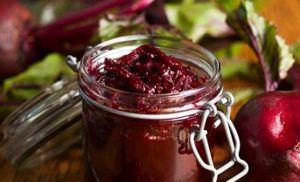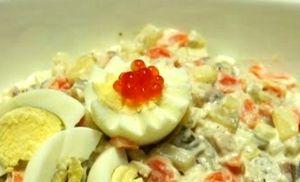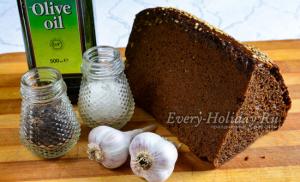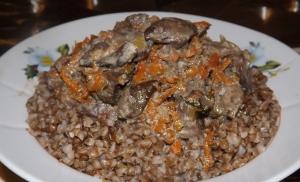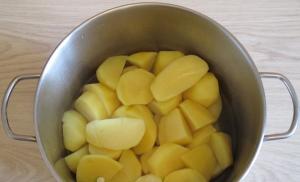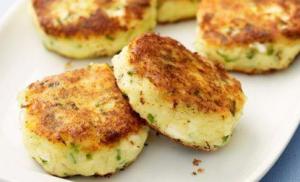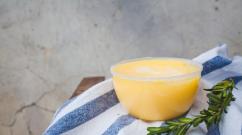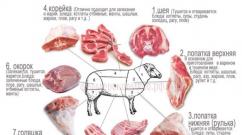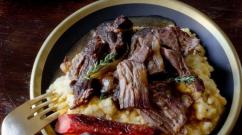He knows kung fu. Kung Fu: a word with a special meaning and an interesting history
To begin with, let us give the dates of origin of some modern types of martial arts:
Karate- arose in the 20s. XX century.
Taekwondo-in 1955.
Aikido-in 1938.
JudO- arose at the end of the 19th century from jujutsu.
Sambo- in 1923, Dynamo team came up with the name SAMOZ (self-defense), since 1946 the name Sambo (self-defense without weapons) appeared.
When did Wu-shu appear?
The mention of the WUSHU technique dates back to the reign of the Qin Dynasty (221-207 BC).
In general, the first mention of military training dates back to the 3rd century. BC. Wu-shu had the appearance of individual military training. It included both the technique of hand-to-hand combat and the use of weapons.
Warrior Monks
Around the 6th century, a warrior named Bodhidharma came from India and settled in the Shaolin Monastery. This is where Shaolin Wu-shu began. And after the monks helped return the throne to the second emperor of the Tang dynasty (Li Shimin), he allowed the monastic troops to exist. This is how war monks appeared and a kind of military schools were formed. During the Song era (960-1279), the monks of the monastery often went into the world, thereby spreading Kung Fu techniques throughout China.
Muslims and Wu-shu
After 1219, during the conquest of China by Genghis Khan, Arabs and Islam began to appear in the country, which provoked an expansion of the capabilities of Chinese Kung Fu techniques. A new nation of Muslims appeared in China, they were called Huizong. They were officially recognized in 1275 by decree of the founder of the Yuan dynasty. During this period of time, kung fu classes were welcomed for Muslims; rulers tried to make them a part of the life of every employee. Chinese technology has been banned since 1279. Theater troupes began to appear, from which the Chinese Theater arose. The movements required beauty, which influenced the realism of the technique. Only after the expulsion of the Mongols did fighting qualities begin to return to kung fu. This was favorably influenced by the overall development of Leitai (fights on platforms).
Ming Dynasty
The "Golden Age" of Wu Shu began during the Ming Dynasty, during the reign of the first Emperor Zhu Yuanzhang.
General Qi Jiguang introduced general Wushu training into the army. He was famous for defeating Japanese troops at the age of 27 (12th century).
Qing Dynasty
On June 6, 1644, Manchu troops captured Beijing. The power of the Qing dynasty was established, which ruled until 1911. The practice of Wushu went underground, turning into secret societies. During this period, a huge number of masters were destroyed. Particularly large losses in the world of martial arts occurred during the uprising of the “Chinese Boxers” (Ihetuan-nei, 1899-1901).
In 1909, the Shanghai Jinwu Association (True Martial Arts Association) was founded.
Revival of Wu-shu
The Xinhai Revolution (1911-1913) renewed the activities of secret societies.
In 1911, the Wushu championship was held in Qingdao. And in 1923, the Wushu Olympics was held in Shanghai.
In 1927, Wu-shu was renamed Guo-shu (state art). The government tried to create a new idea of kung fu and wanted to transfer it to the public service. Many high-ranking officials studied one or another school. In particular, the first leader of China, Sun Zhongshan (Sun Yat-sen), studied Taiziquan.
In 1928, the Central Institute of Gou-shu (national art) was founded.
In November 1953, the first All-China National Spartakiad was held in Tianjin, by order of the party. More than one hundred Wushu styles were demonstrated. The competition featured such disciplines as: sparring without protection, sword fighting, pole and spear fighting, demonstration of strength (weight lifting). After the Spartakiad, a commission for the reform of Wu-shu was created. Such sports directions began to be created as: long fist (Chang Quan), southern fist (Nan Quan), etc.
In 1928 - the first government in China.
1936 - The Chinese first showed kung fu at the Olympic Games in Berlin.
Communists and Wu-shu
1949 - the communists in power officially banned Wu-shu as a feudal relic.
1966-1976 – Great Proletarian Cultural Revolution. Repression and persecution of Wu-shu masters began, many of them fled the country, which affected the spread of Chinese technology throughout the world. After the end of the revolution, the Kung Fu masters were left alone.
Modern Wu-shu. Wushu gymnastics. Sanshou.
In the spring of 1979, the State Sports Committee of China decided to create a “Competition Sports Uniform.” This is how Wu-shu gymnastics appeared, the basis of which was Tao (a formal set of exercises). This task was entrusted to the Zhejiang Sports Committee and the Wuhan and Beijing Institutes of Physical Culture.
Since 1982, Sanshou (sparring) competitions began to be held, and in 1988 the first international Wushu competitions were held. The first World Wushu Championship took place in Beijing in the fall of 1991, in which the USSR national team took part and took 2nd place.
Today's requirements for Sanshou competitions:
Protection (gloves, helmet, vest);
Ban on elbows and knees, which is important for a real fight;
The platform for the fight is 8*8 m with soft flooring without fences;
Fights take place barefoot;
Against one opponent.
Thus, for successful performances in Sanshou, it is more important to master wrestling, boxing or kickboxing than Kung Fu techniques.
In China itself, kung fu began to be practiced at the Shaolin Monastery, in Honan Province, in central China. Apparently, the art of hand-to-hand combat was brought to China by Buddhist monks from India in the 3rd or 4th century BC. Some historians believe that it came to India with the arrival of the soldiers of Alexander the Great. The "Monastic Fist", as it was formerly known, was not widely known in China until Shaolin was destroyed by imperial troops in 575. And only a few monks managed to escape then.
It was a difficult time. The monks, who developed kung fu movements into the form of alternating exercises, taught their methods to local residents so that they could defend themselves from rampaging feudal lords or robbers traveling along the roads. These kung fu techniques are most likely of the "soft" type; The "hard" style developed in the north of China, perhaps in Mongolia it is much more aggressive, this is a more attacking fighting style.
As a rule, masters practicing northern styles pay a lot of attention to the technique of kicks and defense with their feet, quickly attack and instantly break the distance, use kicks in a high jump, as well as acrobatic jumps and somersaults, while the masters of the south prefer deep defensive stances with with legs spread wide apart, using punches from a short distance, kicks no higher than the waist. Perhaps the most famous representative of the northern styles is the Eagle Claw clan. Their technique includes various strikes to the eyes, similar to those of an eagle, and they also very quickly grab the throat and choke. The originator of this style was allegedly a man named Yu Fei, who lived from 1103 to 1141. With its striking, grappling and choking, this style is not very different from modern jiu-jitsu. During the Ming Dynasty (1368 - 1644), Lai Cheyong combined the Eagle Claw style with a style he called Faan Ci. This system is effective due to its amazing punches and kicks, which are delivered while jumping high. In total, taken together, there are perhaps five hundred different styles and systems of kung fu. About 400 years ago, this art penetrated to Okinawa, and from there to Japan, where it became known in 1917 as karate and jiu-jitsu.
Boxing with kicks is also known in Thailand and Europe, but kung fu techniques, extraordinary in their sophistication and sophistication, are undoubtedly the privilege of China. For many reasons, the Chinese are always reluctant to reveal the secrets of kung fu to foreigners. Over the past century, many Chinese have immigrated to California and other Western states, where they have often been the target of brutal persecution and pogroms, usually perpetrated by people who saw these friendly, hard-working people as harbingers of the approaching Yellow Peril, but most importantly by the people of America They saw them only as cheap labor. China itself has been the target of increasing exploitation by Western countries, especially Britain.
Beginning in 1870, secret societies began to arise in China, practicing kung fu and other martial arts in the hope that this would help them expel foreigners from their ancient land.
Etymology
Literally translated from Chinese, “kung” (“gong”, “gong”) (功 ) gives the meaning of “strength”, “power”, as well as “achievements” and “results” of activity, work, “fu” (夫 ) gives the meaning of person. Hieroglyphs are combined to describe any acquired skill, achievements gained through hard work over a long period of time, including the art of mastering one's body, mind and energy in order to gain superiority in hand-to-hand combat.
Counts that the term "kung fu" was not used in China in the sense of "Chinese martial art" until the 20th century, in which sense the term does not appear in ancient texts. In its modern meaning, the term first began to be used in the West, after it was reported l French Jesuit missionary Jean Joseph Marie Amiot, in the 18th century. The term was rarely used until the late 1960s, when it gained worldwide fame and popularity through Hong Kong films starring Bruce Lee and later the Kung Fu television series. IN Currently, the term is widely used in the sense of “Chinese martial art” in China and the world, being a symbol of the achievements of the Chinese nation in the field of martial arts.
Story
The founder of kung fu as a martial art is believed to be the Indian monk Bodhidharma, known in China as Damo. According to legend, he was a prince from South India, but he refused the royal title and inheritance, choosing for himself the simple life of a Buddhist monk. He traveled extensively throughout India, preaching and spreading the teachings of Buddhism. In those days, Indian monks often traveled to China to spread Buddhist teachings.
In 520 AD e. Bodhidharma left India and went to China. There he settled in the Shaolin Monastery. The local monks seemed to him physically weak and unable to withstand the ascetic life of Buddhists. Then he offered the monks a set of physical exercises to strengthen the health and endurance of the monks. The exercises turned out to be very effective and the monks began to do them regularly, bringing their skills to perfection. Gradually, based on these physical exercises, a system of self-defense was developed.
The students were taught that those who could master kung fu would be able to overcome everything in their path, and a holy rage gripped the hearts of these young guys who believed that they were stronger than foreign bombs and bullets, that they could defeat their own enemies with bare fists and swift feet. Some instructors sometimes reached the point of complete nonsense, convincing their students that bullets could not cause any harm to their strong bodies. All this led to the fact that at the beginning of the century thousands of young Chinese challenged the developed industrial powers, including England and America. This event was called the Boxer Rebellion. And, of course, they all died in unequal battles.
Most of us, since physical education lessons at school, are accustomed to breathing deeply: arms up, take in more air, exhale; inhaled again, etc. However, try to breathe like this for a while - your head will spin. Why? Because we violate our natural breathing pattern; With rapid breathing, the brain is oversaturated with oxygen. With a lack of carbon dioxide, metabolic processes are disrupted, coordination is lost, and you can even fall, losing your balance. In the Far East, the “belly” type of breathing is adopted. Breathing practice is given a lot of attention in combat
arts, and, apparently, this is why you can often see a rounded tummy in old masters (for example, in engravings depicting samurai), but this is not at all due to obesity. Approximately three fingers below the navel is the tan tien point, which is considered the energy center of the body. To achieve a feeling of heaviness and then warmth through proper breathing, to concentrate the center of gravity of the body at this point while performing martial movements is an indispensable condition for mastering mastery in martial arts.
Let's start our breathing exercises with diaphragmatic breathing, i.e. breathing from the lower abdomen. To do this, you need to stand up straight, relax and exhale all the air from your lungs. Then we begin inhaling in three stages: first, the lower part of the abdomen (peritoneum) is “inflated,” then the middle part (diaphragm), and only then we complete the inhalation with the chest. Inhalation is done slowly, through the nose, in a natural rhythm.
Kung Fu Giants
Liang Yi Quan, born in 1931, is known as one of the "Top Ten Masters of China". He began studying traditional kung fu at an early age under the guidance of his father. Received a state award for outstanding contributions to wushu. Known as the author of the books "Shaolin Quan Fa", "Wushu Jiao Tshai" and others.
Wushu (武术) is the general name for all martial arts existing in China. At different times, different terms were used for the same purpose - wu (武艺), goshu (国术), etc. - so it is absolutely wrong to look for some deep philosophical meaning in the writing.
About names
Other names:
- Wu-shu, woo-shi, wu-shi - incorrect transcription.
- Kung Fu (in Cantonese), Gong Fu (in official Chinese) - literally “work on oneself/training”, also means the result of hard training, in Hong Kong it is used to refer to wushu, a variant of kung fu is also used.
- Guo-shu - literally "country art/national art"; a term used to refer to Chinese martial arts during the Republic of China, currently used in Taiwan.
- Wuyi literally means “martial art,” an old term from the time of Imperial China.
- Quan-fa (literally "fist techniques") or Quan-shu (literally "fist art") is one of the branches of wushu, sometimes this word is used as a synonym for all wushu. Interestingly, the same characters are used in the word kempo, which is a Japanese reading of the name chuan-fa, used in combination with kempo-karate to name the animal styles of Okinawan karate, derived from wushu.
- In addition, the word kempo has become synonymous with any martial arts or martial arts in the world.
Kung Fu and Wu Shu
In the Russian language, a tradition has developed to define the term “kung fu” as a martial art, and the term “wu-shu” as a set of gymnastic exercises; although they, in fact, constitute a single, integral system of physical and spiritual improvement. According to a half-joking definition, "kung fu is wushu performed at a fast pace."
Types and styles
Sports Wushu
- Wushu-sanda (sanshou)
These two branches can be classified as sports wushu.
Wushu-taolu is a sport reminiscent of rhythmic gymnastics. Participants compete in performing complex movements made up of movements of various styles of wushu with the addition of acrobatic elements; marks are given for the complexity of the movements, the clarity of their execution, the theatricality of the execution, etc. In addition to competitions for performing complexes alone, there are also types of competitions such as team performance of complexes and staged fights (duilian).
Sanda- This is sports sparring. Fights are held in full contact in protective equipment, including: a helmet with protection for the chin and temples, a mouth guard, boxing gloves (the weight of the gloves depends on the weight category of the participant), a breastplate (vest), groin protection, and possibly bandaging the shins and thighs ( according to medical indications). All participants are distributed depending on weight categories. Appraisal technique: kick to the head or body (2 points), punch to the body or head (1 point), kick to the thigh (1 point). Throwing technique is allowed. Capture time is no more than 4 seconds. It is scored as follows: the opponent throws, the athlete remains on his feet - 2 points. Throw with a fall from above - 1 point. Sweeps are allowed. Fighting on the ground is prohibited. The fight takes place at least two rounds of 2 minutes each. A third round is possible. If the score is open (knockdown), both the technique (strike, throw) and the knockdown (2 points) are evaluated. An athlete wins a fight if: he knocks out his opponent, wins two rounds, the opponent is disqualified or drops out due to injury. An athlete wins the round if: the opponent received two knockdowns in the round, the opponent’s total penalty points are more than 6, due to overwhelming technical superiority, two exits from the area. Prohibited actions: blows with the knee, elbow, to the base of the skull (back of the head), groin, spine. Fighting on the ground. Fines: remark (1 point to the opponent), warning (2 points to the opponent), leaving the court (2 points to the opponent). More than two exits from the court - the round is lost. More than two knockdowns in a round - the round is lost, more than 3 in a fight - the fight is lost.
- Shuaijiao (wrestling)
- Tuishou
- Duanbing (fights with short weapons)
Traditional Wushu and Qigong
- Baguazhang (Eight Trigrams Palm)
- Baimeiquan (Baimei's Fist)
- Bamenquan (Fist of the Eight Gates)
- Bajiquan (Fist of Eight Limits)
- Gouquan (Dog Fist)
- Gongliquan (Fist of internal and external development)
- Duandaquan (Short Punch Fist)
- Yiquan, (Fist of Will) aka Dachengquan(Fist of Great Achievement)
- Yingzhaoquan (Eagle Claw Fist)
- Liuhebafaquan (六合八法拳) Fist of Six Correspondences, Eight Methods
- Liuhequan (Fist of those wearing a six-blade cap)
- Liangyiquan (兩儀拳/两仪拳) http://www.wudangtao.net/liangyi
- Mizongquan (Fist of the Lost Trace), aka Yanqingquan(Yan Qing's Fist)
- Meihuazhuang (Fist on meihua plum pillars)
- Piguaquan (Fist of chopping and hanging)
- Sanhuangpaochui (Cannon Strikes of the Three Emperors)
- Xingyiquan (Fist of Formed Will)
- Xinyiquan (心意拳) Fist of Heart and Will
- Sunbinquan (Fist of General Sun Bin)
- Taijiquan (Fist of the Great Limit)
- Taizuquan (Fist of Emperor Taizu)
- Tanglangquan (Mantis Fist)
- Tantui
- Tongbiquan (Fist throwing force through hands)
- Tongbeiquan (Fist of Through Training)
- Wuzuquan (Fist of the Five Ancestors)
- Wujiaquan (Fist of the Wu Family)
- Fanziquan (Turning Fist)
- Huaquan (Fist of Hua Zong)
- Huaquan (Flourishing Fist)
- Hongjiaquan (Fist of the Hong Family)
- Hongquan (Red Fist, or Fist of Hong)
- Huquan (Tiger Fist)
- Hequan (Crane Fist)
- Tsaylifo (Fist of the Tsai, Li, Fo schools)
- Jinshiquan (Golden Lion Fist)
- Chaquan (Fist of Cha-world)
- Changjiaquan (Chang Family Martial Art)
- Chojiaoquan (Sticking Fist)
- Shaolinquan (Fist of Shaolin Monastery)
- Shuaijiao
- Shejiaquan (fist of the nationality she)
- Yunchunquan (Fist of Eternal Spring)
Famous wushu masters
- Yan Xizhai (-)
- Huang Baijia (-?)
- Chen Wangting (?-)
- Cao Jiu (late 17th - early 18th centuries)
- Wu Zhong
- Gan Fengchi
- Chiang Naizhou (-)
- Sun Tong
- Qi Xin
- Feng Keshan (-)
- Song Mailun (-)
- Wang Zhiguo (c. -?)
- Liang Xuexiang
- Zhao Sanduo (-)
- Tsai Yuming (-; according to other sources -)
- Miaoxing(1875-1933) nicknamed Wenhao, people called him the "Golden Arhat". From Dengfeng County, Henan Province. Since childhood, he has been involved in martial arts, also engaged in literary work, and studied Buddhist teachings. Having reached adulthood, he went on a journey and improved himself in martial arts. A few years later he came to the Shaolin Monastery, shaved his head and became a monk, received instructions from the abbot of Henglin, studied methods of fighting with a pole stuck into a mountain, the Arhats' fist, methods of influencing points, painful techniques associated with influencing bones, qinna, qigong, became big master. When Henlin passed into nirvana in 1923, Miaoxing became the new abbot. He broke the tradition of not transmitting secret techniques to the outside world, began to widely teach monks and laymen, and spread Shaolin Wushu. In 1933 he went into nirvana. He left behind the manuscripts “Explanation of the Shaolin Fist” and “Explanation of the Shaolin Pole.” The “Instructions on Luohanquan” written in Miaoxing’s hand have been passed down to this day.
- Tong Zhongyi(1879-1963) nicknamed Liangchen. Manchu. His ancestors were from Shenyang, Liaoning Province, but in the sixth generation moved to Cangzhou, Hebei Province. The art of fighting Shuai Jiao and medical knowledge were passed down in the family. Tong Zhongyi studied family arts since childhood, studied liuhequan, was skilled in Shuai Jiao and ball throwing. In 1904, in Fengtian (present-day Shenyang), he began to earn a living as a security guard. In 1910, he became the second most senior Wushu teacher of the palace guards. Since 1911 - chiropractor of the 1st cavalry regiment of the Chahar province. In 1917 - trainer of wushu and shuaijiao in Anhui province. In subsequent years, he worked as a teacher of Wushu and Shuaijiao in various army units. In 1927, he defeated a Japanese judo master in Shanghai, founded the Zhongyi Fist Arts Society and the All-China Shuaijiao Society, and taught martial arts and medicine. In 1928, he was among the people recognized as the best at the All-China “Gausha Tests.” After that, he worked at the Shanghai Guoshu Institute, taught wushu in various educational institutions, and taught shuaijiao at the Jingwu Association. After the founding of the People's Republic of China, Tong Zhongyi worked in various organizations involved in the development of wushu and Chinese medicine. Author of the work “Chinese Wrestling Techniques” shuaijiao».
- Chen Gongzhe(1880-?) from Xiangshan (present Zhongshan County) Guangdong Province. At the age of six he was already helping his older sisters trade, at the age of nine he moved to Hong Kong with his father, and the next year he returned to his native village. At the age of twenty he came to the Jingwu Athletic School, and later, together with Yao Chanbo and Lu Weichang, he created the Jingwu Association. When the Wuchang Uprising began in 1911 and Sun Zhongshan (Sun Yat-sen) arrived in Shanghai, Chen Gongzhe welcomed him as the representative of Xiangshan. In 1915, together with Yao Chanbo, he founded the Jingwu Association in Shanghai on Peikair Street, and together with Chen Tesheng began publishing a library on fighting methods. Founded Jingwu Park in 1918. In November 1919, he established the Guangdong and Hong Kong Jingwu Association. The following year, he took part in a trip to Vietnam and Singapore and established the Jingwu Association. In 1923, he again participated in a trip to the countries of the southern seas and became an apprentice to Zhang Taiyan. After 1935, he almost did not participate in the work of the Jingwu Association. In 1957, he was a guest at the All-China Wushu Championship, and upon returning to Hong Kong he wrote “The History of Chinese Wushu,” mainly dedicated to the 50-year history of the Jingwu Association.
- Ma Liang
- Zhang Zhijiang (1882-1966) nicknamed Zijian. Originally from Hebei Province. Since childhood, following his grandfather, he studied the “Four Books” and “Pentateuch,” and practiced Taijiquan and Baguazhang. Having matured, he entered the University of the Army. Since 1901 - in military service, he served in the Northern Regular Army of Cao Kun, in the cavalry units led by Wu Peifu. In 1914, he joined the troops of Feng Yuxiang. He was a cavalry division commander, brigade commander, corps commander, commander of Chahar Provincial troops, commander-in-chief of the National Army, governor-general of the North-West Frontier, pacifying governor-general of Jiangsu Province. In 1927, he left military service and, with the help of Niu Yongjian and Li Jichen, founded the Guoshu Research Institute in Nanjing, which the following year was transformed into the Central Guoshu Institute, with Zhang Zhijiang as rector. Zhang Zhijian persistently fought against the closedness of styles, invited masters of various directions to teach at the Institute, eliminated the initial division of the Institute into Shaolin and Wudang faculties and introduced training according to a scientifically systematized program. Zhang Zhijian stood for a wide scope of study, requiring students to study different styles, train both complexes and hand-to-hand combat, wrestling, fighting with long and short weapons. At the “state tests for gausha” he conducted, there were both complex competitions and duel competitions; those who passed the selection for performing the established complexes took part in the duel competitions. Guided by the idea of joint study of Chinese and Western systems, Zhang Zhijiang organized the “Institution for the Specialized Study of Guoshu” in 1933 (later renamed the “State Pedagogical Institution for the Specialized Study of Guoshu”) and became its head. In 1929, Zhang Zhijian sent special people to Japan to study judo and kendo, as well as study teaching experience, and in 1933 and 1936 he sent teams to demonstrate and promote wushu in Guangdong and Guangxi, Fujian, Hong Kong, the Philippines, Singapore, Malaysia. During the war with Japan, Zhang Zhijiang evacuated the teams of the Central Institute of Guoshu and the Institution for the Specialized Study of Guoshu to the south. In 1948, the closure of the Central Guoshu Institute was announced, and Zhang Zhijiang settled in Shanghai. After the founding of the People's Republic of China, Zhang Zhijiang was elected a member of the CPPCC. In 1956, he was the head of the judging committee at the Festival of 12 Wushu teams. Author of the works “Impressions of a trip to the East”, “National art and national difficulties”, “Gosh and sports”.
- Li Jinglin(1885-1931) nicknamed Fanchen. Originally from Hebei Province. At the end of the Qing dynasty, he received military education in Baoding. At various times he served in the barracks of the lower level of the palace guard, as chief of staff for the Governor General of Heilongjiang Province, as a regimental commander in the field army, as a brigade commander and as a division commander in the Fengtian Army. In 1924, during the 2nd Zhili-Fengtian War, he was an army commander, after the war he was the High Commissioner for Military Affairs in Zhili Province, and the commander-in-chief of the united Zhili-Shandong Army. In 1927, Li Jinglin retired from military affairs and, together with such an influential person in military and political circles as Zhang Zhijiang, founded the Guoshu Research Institute in Nanjing, which in the same year was renamed the Central Institute of Guoshu, Li became deputy rector. Since childhood, Li Jinglin was fond of martial arts, especially loved swords. jian. He not only performed complexes with sensitivity, but also skillfully fenced. While Li Jinglin was the deputy rector of the Central Guoshu Institute, he recruited many experts in the field of sword fighting - jian, and the sword complex they created became known as “Wudang Jian.” Li later taught sword art in Nanjing, Shanghai and Jinan. His student Huang Yuanxiu wrote the book “The Main Requirements for Wudang Methods of Sword Action,” where he described the techniques transmitted by Li.
- Zhu Guofu(1891-1968) nicknamed Bingong, originally from Hebei Province. As a child, he became an apprentice to the “iron arhat” Zhang Changfa and studied the Shaolin fist art of arhats. Then he studied with a certain Taoist, studied both medicine and methods of fighting without weapons and with weapons. At the age of 12 he became an apprentice to Ma Yutang and studied Xingyiquan, receiving instructions from Li Cunyi and Zhang Zhangkui. Later he became a student of Sun Lutang and Wang Yuheng and studied bagua, taiji and shuaijiao. In 1928 he was among the best at the “state tests in gauche”. He taught wushu in Feng Yuxiang's "halberdier squad". Later he was the head of the Training Department at the Nanjing Guoshu Institute. During World War II he lived in Chongqing and taught at Chongqing University. After the formation of New China, he became a member of the board of the All-China Wushu Association, chairman of the Chongqing Wushu Association. Author of such works on wushu as “Qinna”, “Treats on Xingyiliuhequan”, “Xingyi Xisui Baojian Qigong”, “Origin and History of Xingyiquan”, “Collection of Guoshu” (4 issues), “The relationship of Guoshu and healing”. Under his editorship, such materials as “Spear Fighting”, “Manjianghong”, “Sanda and Duanbing Training”, “Wuhuapao Pair Complex”, “Pair Complexes with Wudang and Kunwu Swords” were published. "Sports massage"
- Jiang Rongqiao (-)
- Tang Hao(1897-1959) nicknamed Fansheng, nicknamed Lihua, originally from Wu County, Jiangsu Province. In his youth, he diligently studied himself, and during his breaks he liked to practice martial arts. When I came to work in Shanghai, I learned from Liu Zhennan from Dezhou, Shandong Province liuhequan. Later he became the director of the Shanghai Shanggong Primary School, where he taught Wushu, with special emphasis on Jiben Gong and acrobatics when training. In 1927, he was arrested “on suspicion of communism,” but thanks to the intercession of Zhu Guofu, he was released, and later went to Japan to study law and administration, while simultaneously studying judo and kendo. After returning home at the invitation of Zhang Zhijiang, he became the head of the editorial and publishing department of the Central Guoshu Institute. In 1936, the Kuomintang police arrested seven leaders of the All-China National Salvation Association - Shen Junru, Shi Liang and others. Tao Xingzhi and Gu Liuxin were also charged with “threat to national interests.” Tang Hao was not afraid of violence and became Gu Liuxin's protector. In 1941, Shanghai lawyers were unexpectedly detained by the puppet police, and after being arrested by the Japanese gendarme department, they were beaten with whips. After this he had to leave Shanghai and worked as a lawyer in Anhui Province. After the Liberation, Tang Hao returned to Shanghai, became a member of the Executive and Legislative Committee of East China, in 1955 became a consultant to the State Sports Committee, specialized in researching the history of Chinese Wushu and Chinese physical culture, and published eight editions of “Materials on the History of Physical Culture in China.” Due to difficult living conditions, he fell ill in 1959 and died in Beijing.
Tang Hao is the founder of the modern scientific study of the history of Chinese Wushu. Back in the 1920s, while working at the Central Institute of Guoshu, he began writing articles, doing his best to introduce “scientificness” into wushu. In the 1930s, Tang Hao began to diligently study the history of wushu, publishing such works as “Taijiquan and Neijiaquan”, “Studies on Shaolin and Wudang”, “Neijiaquan”, “The Fist Canon of Qi Jiguang”, “A Study of Literature on Chinese Martial Arts”. Through systematic research into the history of Wushu, Tang Hao not only dispelled a number of myths that had obscured the situation for a long time, but also raised new questions. After Liberation, Tang Hao studied Marxism, historical materialism and dialectical materialism, and achieved new successes using the methods available in them. Until now, the achievements achieved by Tang Hao in the study of the history of wushu and the history of physical culture in China are considered the highest.
- Xu Zhen(1898-1967) nicknamed Zhedong. Originally from Changzhou, Jiangsu Province. He was involved in educational issues and loved martial arts. He was a professor at Guanghua University, Central University, Specialized Institute of Education, Wuhan University, and director of Changzhou Middle School. Xu Zhen sought to learn wushu as much as possible. In 1919, he studied Chaquan and Tantui with Yu Zhensheng and Ma Jinbiao, in 1922 he studied Taijiquan and Xingyiquan with Zhou Xiufeng, later he studied Taijiquan with Yang Shaohou, Hao Yuezhu, Li Yaxuan, with Du Xinwu he studied Zizhanmen techniques, with Tian Zuolin he studied Tongbi quan . Xu Zhen conducted research on the history of Wushu. He is the author of the works “A Little About National Technique”, “Authentic Records of the Study of Taijiquan”, “A Joint Statement of Disputes about Falsehood and Criticism of Laws in Treatises on Taijiquan”.
- Stanislav Leonidovich Bereznyuk
- May Mikhailovich Bogachikhin
- Alexey Alexandrovich Maslov
New kempo schools that consider themselves wushu
In the 80s and 90s of the 20th century, in the last years of the existence of the USSR, a number of new schools appeared that officially classified themselves as wushu. Despite the fact that a number of masters of traditional schools called (and calls) them impostors, nevertheless, from a Neutral Point of View, these schools are worth mentioning. Moreover, in traditional Wushu there are many self-proclaimed schools that consider themselves to be
